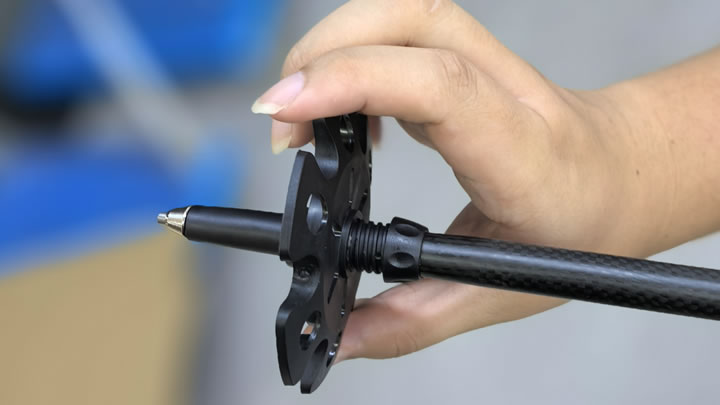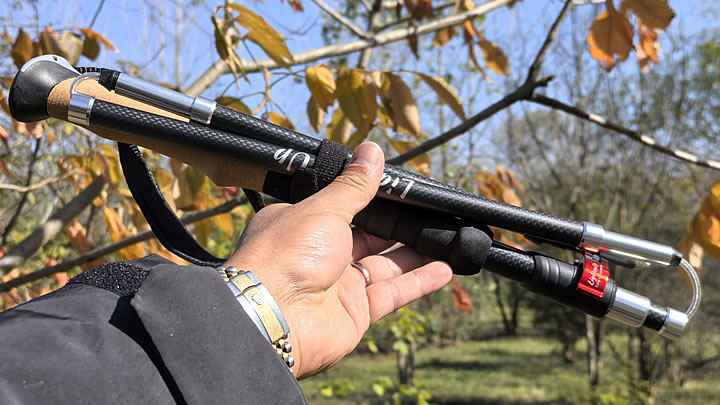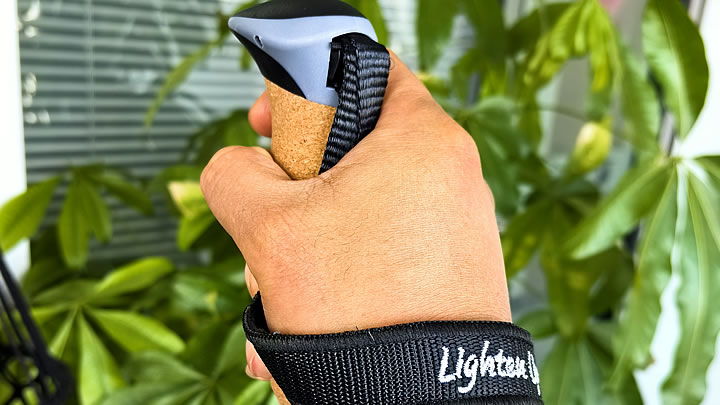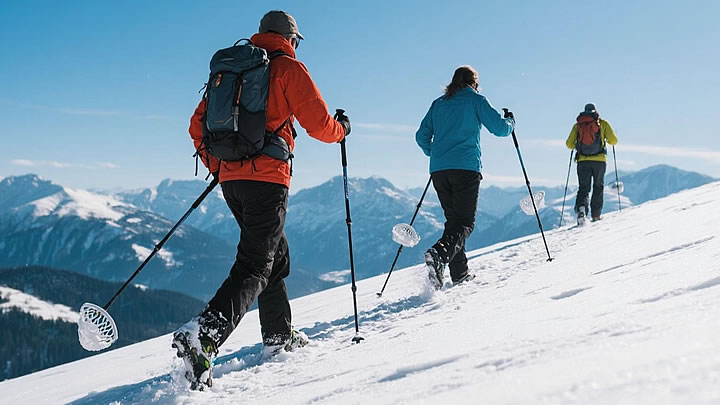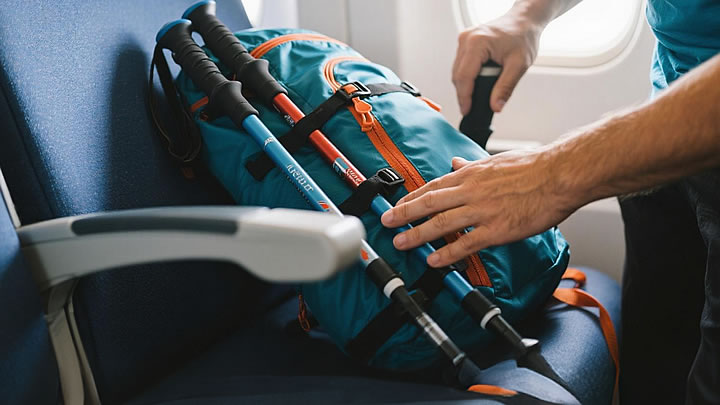Are Collapsible Trekking Poles Durable? The Truth Beyond Trail Myths
Collapsible trekking poles dominate the market for their portability, but many hikers question: Can folding mechanisms withstand years of rugged use? The answer is a qualified yes—modern engineering delivers exceptional durability, but only when matched with proper care and smart buying choices. Let’s dismantle the myths.
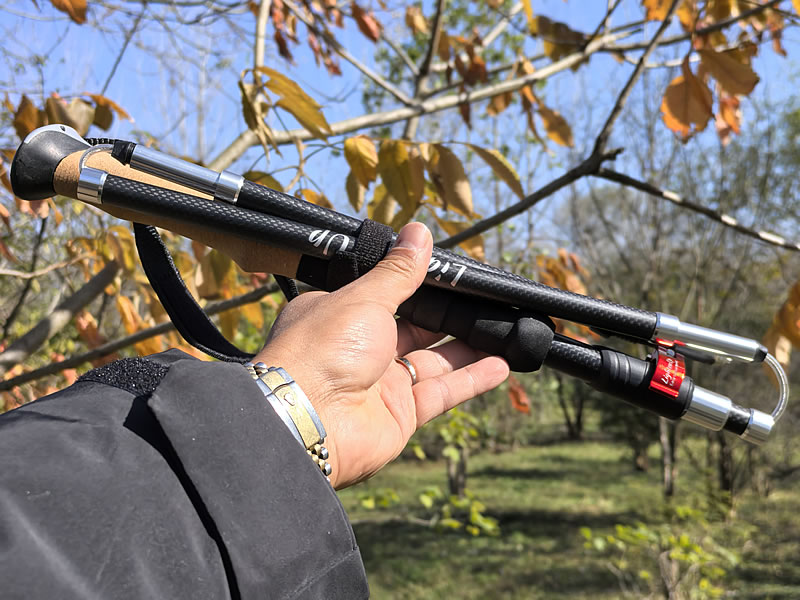
The Durability Framework: Where Engineering Matters
✅ 1. Materials Dictate Longevity
- Aircraft Aluminum (7075-T6): Industry standard for mid-range poles. Resists bending, survives impacts, and tolerates rough handling. Weakness: Can dent or bend under extreme force (e.g., rock falls).
- Carbon Fiber: Lighter and dampens vibration. High-grade carbon (100% or blended) offers superior strength-to-weight ratios. Weakness: Vulnerable to sharp lateral impacts (e.g., closing in car doors).
- Cheap Alloys (e.g., 6061): Found in discount poles. Prone to snapping under stress. Avoid.
✅ 2. Locking Mechanisms: The Heart of Reliability
- Flip Locks (Lever Locks): Most durable for heavy loads/muddy trails. Metal levers > plastic. Withstand 50,000+ cycles if cleaned.
- Twist Locks: Lightweight but require maintenance. Grit causes slippage; threads wear out faster.
- Folding Poles (Z-style): Minimal moving parts but rely on internal cord tension. Snapping cords are a single point of failure.
✅ 3. Stress Points: Design vs. Damage
- Ferrule Joints: Where sections connect. Reinforced collars prevent splitting.
- Tip Anchors: Should be welded, not glued.
- Basket Mounts: Plastic threads strip easily; metal sockets last longer.
Real-World Testing: What the Data Shows
Independent lab tests (per ISO 20957) reveal:
- Quality aluminum poles endure 250–400 lbs of vertical force before failing.
- Carbon poles flex 20–30% further than aluminum without breaking.
- Flip locks maintain 90% clamping force after 10,000 cycles.Translation: A well-built pole survives the Appalachian Trail.
5 Rules to Maximize Collapsible Pole Lifespan
- Clean Locks After Every Muddy HikeGrit = mechanism killer. Use a toothbrush and water on flip locks; dry thoroughly.
- Never Over-Extend SectionsLeave 1.5–2cm of overlap in joints. Over-extension stresses ferrule walls.
- Store Dry & UncollapsedMoisture corrodes internal locks. Store poles extended or loosely collapsed.
- Avoid Leverage AbuseDon’t pry rocks or "vault" over gaps. Poles aren’t climbing axes.
- Replace Worn Parts EarlyTips, baskets, and cords cost less than new poles.
When Do Collapsible Poles Fail? (The Fine Print)
- Twist Locks in Freezing Conditions: Ice jams threads. Fix: Tent pole lubricant (silicone-based).
- Carbon Poles in Rock Scrambles: Side impacts cause splintering. Solution: Use aluminum poles for technical terrain.
- Saltwater Exposure: Corrodes aluminum locks. Rinse immediately.
Durable Brand Benchmarks (Independent Testing)
| Brand | Best For | Key Durability Feature |
|---|---|---|
| LEKI | All conditions | SpeedLock 2 (metal lever) |
| Black Diamond | Alpine terrain | FlickLock Pro + Carbon Core |
| Komperdell | Value + longevity | Powerlock 3.0 + 7075 aluminum |
| REI Co-op | Budget quality | Reinforced twist locks |
The Verdict
Yes, collapsible trekking poles are durable—if you invest in proven materials (7075 aluminum or high-grade carbon), prioritize robust locking systems (flip locks > twist locks), and commit to simple maintenance. Avoid ultra-cheap poles with plastic parts or thin alloys.
“My LEKI Carbon poles survived 2,200 miles of the PCT. Clean the locks, respect their limits, and they’ll outlast your boots.”– Grayson T., Thru-Hiker
Durability isn’t just about construction; it’s about partnership. Treat your poles as precision tools, not disposable sticks, and they’ll anchor your strides for thousands of trail miles.

